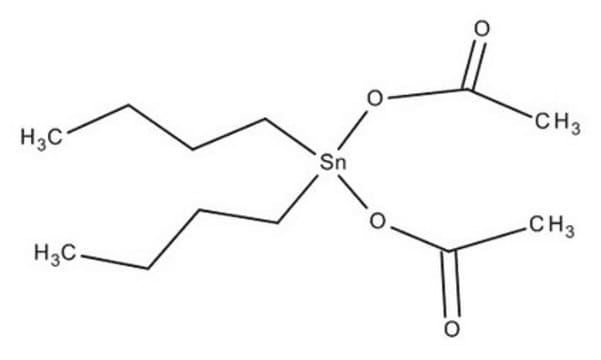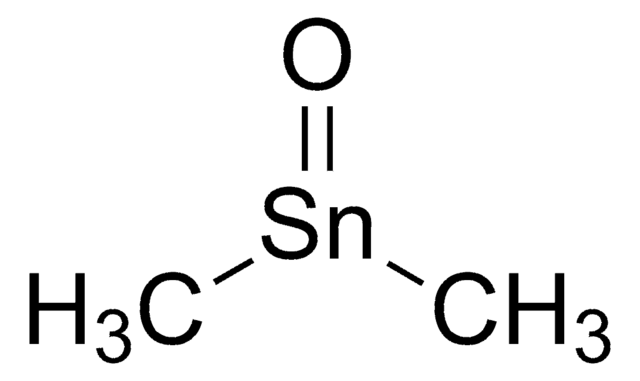290890
Dibutyltin diacetate
technical grade
Sinonimo/i:
Diacetoxydibutyltin
About This Item
Prodotti consigliati
Grado
technical grade
Densità del vapore
12 (vs air)
Tensione di vapore
1.3 mmHg ( 25 °C)
Indice di rifrazione
n20/D 1.471 (lit.)
P. eboll.
142-145 °C/10 mmHg (lit.)
Punto di fusione
7-10 °C (lit.)
Densità
1.32 g/mL at 25 °C (lit.)
Stringa SMILE
CCCC[Sn](CCCC)(OC(C)=O)OC(C)=O
InChI
1S/2C4H9.2C2H4O2.Sn/c2*1-3-4-2;2*1-2(3)4;/h2*1,3-4H2,2H3;2*1H3,(H,3,4);/q;;;;+2/p-2
JJLKTTCRRLHVGL-UHFFFAOYSA-L
Cerchi prodotti simili? Visita Guida al confronto tra prodotti
Descrizione generale
Applicazioni
- Wittenberger tetrazole derivatives by reacting with various nitriles in the presence of trimethylsilyl azide.
- Carbamate derivatives from various isocyanates and alcohols in the presence of dichloromethane as solvent.
- Urea derivatives from aryl isocyanates and various amines in the presence of 4-methylmorpholine.
Avvertenze
Danger
Indicazioni di pericolo
Classi di pericolo
Aquatic Acute 1 - Aquatic Chronic 1 - Eye Dam. 1 - Muta. 2 - Repr. 1B - Skin Corr. 1B - Skin Sens. 1 - STOT RE 1 - STOT SE 1 Oral
Organi bersaglio
thymus gland, thymus gland,Immune system
Codice della classe di stoccaggio
6.1A - Combustible acute toxic Cat. 1 and 2 / very toxic hazardous materials
Classe di pericolosità dell'acqua (WGK)
WGK 3
Punto d’infiammabilità (°F)
302.9 °F - Pensky-Martens closed cup
Punto d’infiammabilità (°C)
150.5 °C - Pensky-Martens closed cup
Dispositivi di protezione individuale
Faceshields, Gloves, Goggles, type ABEK (EN14387) respirator filter
Certificati d'analisi (COA)
Cerca il Certificati d'analisi (COA) digitando il numero di lotto/batch corrispondente. I numeri di lotto o di batch sono stampati sull'etichetta dei prodotti dopo la parola ‘Lotto’ o ‘Batch’.
Possiedi già questo prodotto?
I documenti relativi ai prodotti acquistati recentemente sono disponibili nell’Archivio dei documenti.
I clienti hanno visto anche
Il team dei nostri ricercatori vanta grande esperienza in tutte le aree della ricerca quali Life Science, scienza dei materiali, sintesi chimica, cromatografia, discipline analitiche, ecc..
Contatta l'Assistenza Tecnica.















